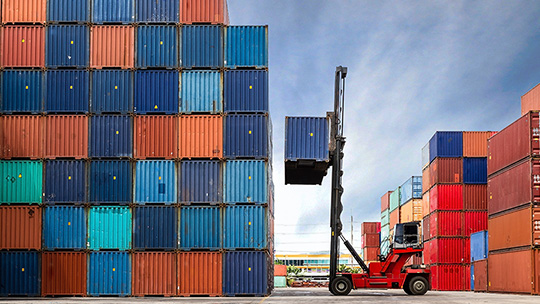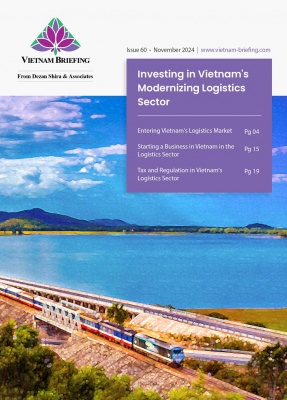Vietnam’s Government Introduces Official Plan for Provincial Mergers
Vietnam’s government has introduced its proposed plan to build a two-tier local government model, reducing the current centrally governed cities and provinces to 34 units. With the restructuring plan finally forming, the government sets its goals to clear bureaucratic hurdles, streamline administrative procedures, and provide a bedrock for sustainable growth targets.
On April 12, 2025, Vietnam’s 13th Party Central Committee agreed with a proposed plan for local government restructuring. The plan includes the main goals of merging provincial-level administrative units, abolishing district-level units, and merging commune-level units, thus building a two-level local government model.
The plan is outlined under Resolution No. 60-NG/TW (“Resolution 60”) of the 11th Conference of the 13th Party Central Committee.
Merging plan for provincial-level administrative units from Vietnam’s government
According to Resolution 60, Vietnam will have 34 provincial-level administrative units, including:
- 28 provinces: Thai Nguyen, Phu Tho, Bac Ninh, Hung Yen, Ninh Binh, Quang Tri, Quang Ngai, Gia Lai, Khanh Hoa, Lam Dong, Dak Lak, Dong Nai, Tay Ninh, Vinh Long, Dong Thap, Ca Mau, and An Giang; and
- Six centrally governed cities: Hanoi, Ho Chi Minh City (HCMC), Hue, Da Nang, Can Tho, and Hai Phong.
On April 14, the government of Vietnam issued Decision No. 759/QD-TTg (“Decision 759”), which outlines a specific plan to rearrange 52 provincial-level administrative units. This decision also details the expected areas, populations, and administrative centers for 34 provinces and cities following the merger.
|
Unchanged Cities and Provinces |
|||
|
No. |
City/Province |
Land area (km2) |
|
|
1 |
Hanoi |
3,359.8 |
8,435,650 |
|
2 |
Hue |
4,947.1 |
1,160,220 |
|
3 |
Lai Chau |
9,068.7 |
482,100 |
|
4 |
Dien Bien |
9,539.9 |
633,980 |
|
5 |
Son La |
14,109.8 |
1,300,130 |
|
6 |
Lang Son |
8,310.2 |
802,090 |
|
7 |
Quang Ninh |
6,207.9 |
1,362,88 |
|
8 |
Thanh Hoa |
11,114.7 |
3,722,060 |
|
9 |
Nghe An |
16,493.7 |
3,416,900 |
|
10 |
Ha Tinh |
5,994.4 |
1,317,200 |
|
11 |
Cao Bang |
6,700.4 |
543,050 |
|
Merged Cities and Provinces |
|||||
|
No. |
New name |
Merged unit |
Administrative center (Current name) |
Land area (km2) |
Population |
|
12 |
Tuyen Quang |
Tuyen Quang, Ha Giang |
Tuyen Quang City |
13,795.6 |
1,731,600 |
|
13 |
Lao Cai |
Lao Cai, Yen Bai |
Yen Bai City |
13,257 |
1,656,500 |
|
14 |
Thai Nguyen |
Thai Nguyen, Bac Kan |
Thai Nguyen City |
8,375.3 |
1,694,500 |
|
15 |
Phu Tho |
Phu Tho, Vinh Phuc, Hoa Binh |
Viet Tri City, Phu Tho |
9,361.4 |
3,663,600 |
|
16 |
Bac Ninh |
Bac Ninh, Bac Giang |
Bac Giang City |
4,718.6 |
3,509,100 |
|
17 |
Hung Yen |
Hung Yen, Thai Nguyen |
Hung Yen City |
2,514.8 |
3,208,400 |
|
18 |
Hai Phong |
Hai Phong, Hai Duong |
Thuy Nguyen City, Hai Phong City |
3,194.7 |
4,102,700 |
|
19 |
Ninh Binh |
Ninh Binh, Nam Dinh, Ha Nam |
Hoa Lu City, Ninh Binh |
3,942.6 |
3,818,700 |
|
20 |
Quang Tri |
Quang Binh, Quang Tri |
Dong Hoi City, Quang Binh |
12,700 |
1,584,000 |
|
21 |
Da Nang City |
Da Nang, Quang Nam |
Hai Chau District |
11,832.6 |
2,819,900 |
|
22 |
Quang Ngai |
Quang Ngai, Kon Tum |
Quang Ngai City |
14,832.6 |
1,861,700 |
|
23 |
Gia Lai |
Gia Lai, Binh Dinh |
Quy Nhon City, Binh Dinh |
21,576.5 |
3,153,300 |
|
24 |
Khanh Hoa |
Khanh Hoa, Ninh Thuan |
Nha Trang City, Khanh Hoa |
8,555.9 |
1,882,000
|
|
25 |
Lam Dong |
Lam Dong, Dak Nong, Binh Thuan |
Da Lat City, Lam Dong |
24,233.1 |
3,324,400 |
|
26 |
Dak Lak |
Dak Lak, Phu Yen |
Buon Ma Thuot City, Dak Lak |
18,0946.4 |
2,831,300 |
|
27 |
Ho Chi Minh City (HCMC) |
HCMC, Binh Duong, Ba Ria – Vung Tau |
District 1, HCMC |
6,772.6 |
13,608,800 |
|
28 |
Dong Nai |
Dong Nai, Binh Phuoc |
Bien Hoa City, Dong Nai |
12,737.2 |
4,427,700 |
|
29 |
Tay Ninh |
Tay Ninh, Long An |
Tan An City, Long An |
8,536.5 |
2,959,000 |
|
30 |
Can Tho City |
Can Tho, Soc Trang, Hau Giang |
Ninh Kieu District, Can Tho |
6,360.8 |
3,207,000 |
|
31 |
Vinh Long |
Ben Tre, Vinh Long, Tra Vinh |
Vinh Long City |
6,296.2 |
3,367,400 |
|
32 |
Dong Thap |
Dong Thap, Tien Giang |
My Tho City, Tien Giang |
5,938.7 |
3,397,200 |
|
33 |
Ca Mau |
Ca Mau, Bac Lieu |
Ca Mau City |
7,942.4 |
2,140,600 |
|
34 |
An Giang |
An Giang, Kien Giang |
Rach Gia City, Kien Giang |
9,888.9 |
3,679,200 |
Note: Resolution 60 has officially completed the merger of 34 provinces and cities. However, the names for the newly formed provinces are still under consultation and have not yet been officially finalized.
From July 1, 2025, the operation of district-level administrative units will end. Therefore, cities that are the administrative centers of provinces and cities are expected to be reorganized into wards, following the new 2-level local government model.
According to Decision 759, the plan for organizing 2-level local governments is as follows:
- Provincial level includes provinces and centrally run cities; and
- Commune level includes communes, wards (on the mainland), and special zones (on islands). Accordingly, district and town-level administrative units will be abolished.
How will the two-tier local government model function?
In his closing remarks at the 13th PCC’s 11th Conference, President To Lam praised the benefits of the restructuring plan for enhancing the efficiency of Vietnam’s local administration.
As a result, the number of administrative units at the commune level across the country will decrease by approximately 60 to 70 percent compared to the current status. Under the new administrative structure, the provincial level will serve both as the implementer of central government policies and as the issuer of policies at the provincial and city levels. Additionally, it will directly oversee and manage the activities of local communes.
Meanwhile, the commune level primarily enacts policies issued by the Central and Provincial levels, is given greater decentralization, and holds the authority to create legal documents necessary for organizing law enforcement in their area, along with the power to address issues within their jurisdiction.
Also read: Vietnam’s Government Restructuring: Updates on Conclusion 127
Implementation plan of Vietnam’s government
On April 14, the Central Steering Committee, directing the implementation of Resolution No. 18-NQ/TW, issued Plan No. 47 on implementing the arrangement and merger of provinces and communes and organizing the two-level local government system according to Resolution 60.
The plan outlines specific tasks for implementing the rearrangement and merger of provincial and communal administrative units and building a two-level local government system. The expected completion timeline in the plan is mainly focused within the year of 2025.
|
Timeline of Vietnam’s Local Government Restructuring |
|
|
Deadline |
Target |
|
April 25, 2025
|
|
|
June 30, 2025 |
|
|
August 15, 2025 |
|
|
September 15, 2025 |
|
|
December 31, 2025 |
|
Vietnam to have 21 coastal provinces post-merger
Enhancing logistics competitiveness
Vietnam is made up of 63 provinces and centrally administered cities, which include 28 coastal areas. Out of these, 26 have seaports, with Ninh Binh and Bac Lieu being the exceptions. Ninh Binh has one of the shortest coastlines in the country at approximately 18 km, while Bac Lieu, although boasting a longer coastline of 56 km, also lacks a seaport. In addition to the 26 coastal regions with seaports, there are eight non-coastal provinces and cities that do possess seaports.
After consolidation, the number of coastal provinces will be reduced to 21 from the current 28, presenting an increase in the proportion of Vietnam’s coastal provinces from 44 percent to 62 percent. Notably, all 21 coastal provinces post-consolidation will have seaports, along with two non-coastal provinces with seaports, Dong Nai and Tay Ninh.
This new administrative framework will provide nearly all provinces in Vietnam with seaports, an essential complementary infrastructure for the transportation network. This enhancement will foster a favorable logistics network for businesses, consequently encouraging investments in areas that currently lack competitive advantages.
Creating mega-port hubs
The merger plan will notably create mega-port systems in areas like HCMC, which will be combined with Binh Duong and Ba Ria – Vung Tau.
Currently, Ba Ria – Vung Tau has a distinctive port system featuring 48 seaports, while HCMC has a type I port system with 40 seaports, and Binh Duong only has the Binh Duong general port. After the merger of these three regions into the newly established HCMC, the centrally governed city will have an impressive seaport network of 89 seaports. Adding 10 offshore oil and gas ports from Ba Ria – Vung Tau, the new city will have a total of 99 seaports, greatly surpassing the existing largest seaport system in the nation, Haiphong, which comprises 50 seaports.
Another area set to enhance its maritime economy post-merger is Can Tho City, which will integrate Can Tho, Soc Trang, and Hau Giang. Following the merger, this area will have 21 seaports. Although the number is relatively small, the key point is that Can Tho will transition into a coastal city. Despite not being coastal and situated nearly 100 kilometers from the nearest seaports, Can Tho City currently has developed 17 type I classified seaports. Gaining sea access post-merger will significantly bolster the maritime economic development of the Mekong Delta’s capital city[SS2] .
Potential of Vietnam’s maritime sector
The Vietnam Maritime Administration reported a robust performance in the maritime sector for 2024. Cargo volume through ports increased by 14 percent, reaching 864.4 million metric tons. Container cargo experienced substantial growth as well, soaring 21 percent to 29.9 million TEUs.
Moreover, the number of ships utilizing the ports rose by 2 percent, totaling 102,670 units. The inland waterway transport sector also grew by 8 percent in terms of vehicles, with around 380,100 units recorded. Notably, the volume of goods transported by Vietnamese fleets had a positive growth of 3 percent in 2024.
Also read: Vietnam Proposes Government Restructuring to Streamline Bureaucracy
Conclusion
Vietnam’s official introduction of a two-tier local government model through Resolution 60 marks a significant restructuring of its administrative framework. By reducing the number of provincial-level units to 34 and streamlining administrative processes, the government aims to enhance efficiency and support sustainable growth.
This restructuring will empower provincial authorities to implement policies more effectively while decentralizing governance at the commune level, ultimately fostering greater responsiveness to local needs.
About Us
Vietnam Briefing is published by Asia Briefing, a subsidiary of Dezan Shira & Associates. We produce material for foreign investors throughout Asia, including ASEAN, China, and India. For editorial matters, contact us here and for a complimentary subscription to our products, please click here. For assistance with investments into Vietnam, please contact us at vietnam@dezshira.com or visit us at www.dezshira.com.
Dezan Shira & Associates assists foreign investors throughout Asia from offices across the world, including in Hanoi, Ho Chi Minh City, and Da Nang. We also maintain offices or have alliance partners assisting foreign investors in China, Hong Kong SAR, Dubai (UAE), Indonesia, Singapore, Philippines, Malaysia, Thailand, Bangladesh, Italy, Germany, the United States, and Australia.
- Previous Article Vietnam-Denmark Relations: Trade, Investment, and Business Opportunities
- Next Article Vietnam Reduces MFN Tariff Rates on Strategic Imports: Decree 73
































